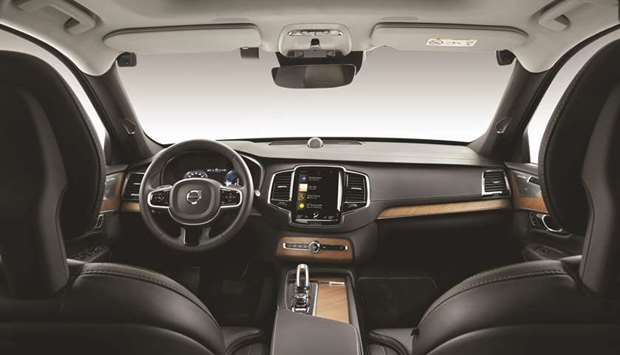Volvo Cars recently revealed a new step in its ambitions to end fatalities in its cars by addressing the issue of distraction.
Apart from speeding, which the company aims to help combat with a top speed limit, distraction is a primary area of concern for traffic safety.
These are among the key areas that constitute the main ‘gaps’ towards Volvo Cars’ vision of a future with zero traffic fatalities and require a focus on human behaviour in the company’s safety work as well, according to a press statement issued in Doha by Domasco, the exclusive distributor of Volvo Cars in Qatar.
Faisal Sharif, managing director of Domasco, said: “Volvo is a world leader in safety technologies. They are constantly developing new technologies and sharing it with other car manufacturers to make roads safer for everyone.
The in-car cameras will monitor for behaviour that may lead to serious injury or death thus achieve the aim of avoiding accidents altogether.”
Volvo Cars believes distraction should be addressed by installing in-car cameras and other sensors that monitor the driver and allow the car to intervene if a clearly distracted driver does not respond to warning signals and is risking an accident involving serious injury or death. That intervention could involve limiting the car’s speed, alerting the Volvo on Call assistance service and, as a final course of action, actively slowing down and safely parking the car.
Examples of such behaviour include a complete lack of steering input for extended periods of time, drivers who are detected to have their eyes closed or off the road for extended periods of time, as well as extreme weaving across lanes or excessively slow reaction times.
A driver monitoring system as described above is an important element of allowing the car to actively make decisions in order to help avoid accidents that could result in severe injuries or death.
Introduction of the cameras on all Volvo models will start on the next generation of Volvo’s scalable SPA2 vehicle platform in the early-2020s. Details on the exact number of cameras and their positioning in the interior will follow at a later stage.
This announcement should be viewed together with the company limiting the top speed on all its cars to 180kph from model year 2021, in order to send a strong signal about the dangers of speeding.
The company wants to start a conversation about whether car makers have the right or maybe even the obligation to install technology in cars that changes their drivers’ behaviour.
Both the speed limit and the installation of in-car cameras illustrate how car makers can take active responsibility for the aim of achieving zero traffic fatalities by supporting better driver behaviour.
Volvo Cars recently also revealed the Care Key, which allows Volvo drivers to impose limitations on the car’s top speed on all cars from model year 2021, before lending their car to others. The Care Key, the monitoring cameras, the speed limit as well existing driver assistance systems all serve one single aim: to support safer driving.

Driver monitoring camera in a Volvo research vehicle.
